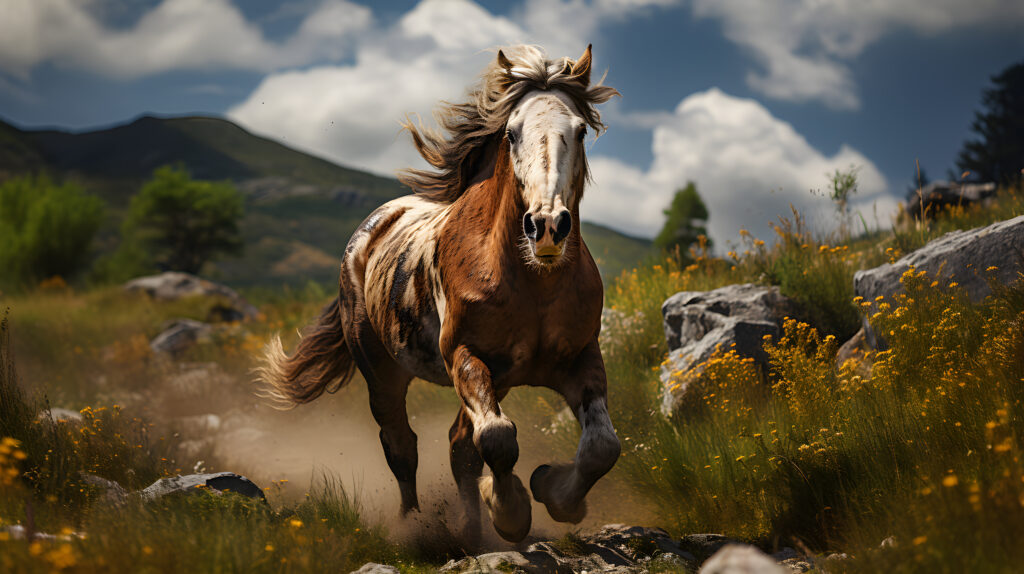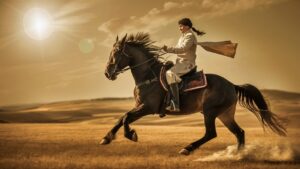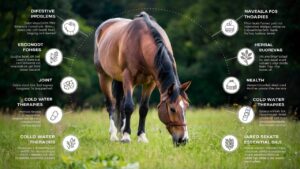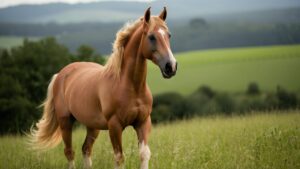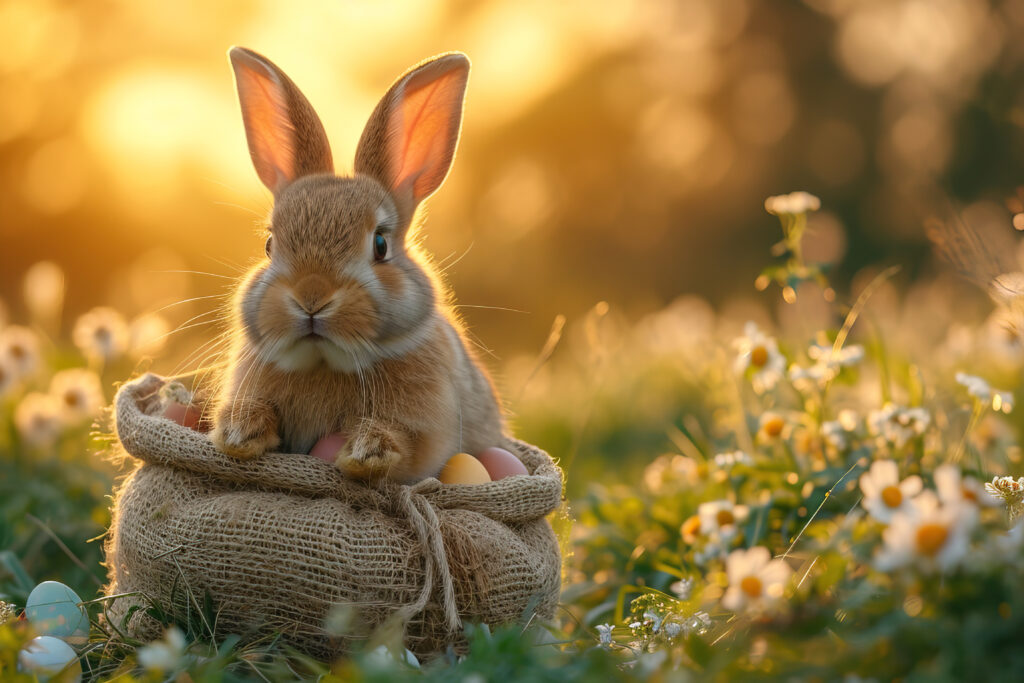Healthy Horse Ensuring your horse receives optimal nutrition is essential for its overall well-being, performance, and longevity. By implementing proper feeding strategies, we can promote a horse’s digestive health, energy levels, and maintain an ideal body condition. In this guide, we will explore the most effective feeding practices that not only promote a healthy digestive system but also align with a horse’s natural eating behaviors.
Understanding the Horse’s Digestive System
To provide your horse with the best nutrition, it’s crucial to understand how its digestive system functions. Horses are natural grazers, designed to consume small amounts of food continuously throughout the day. Their digestive systems are optimized for fiber-rich foods, which means their diet should largely consist of high-quality forage.
- Small Stomach: A horse’s stomach is relatively small, holding only about 2-4 gallons. This limits the amount of food it can digest at once.
- Hindgut Fermenters: Horses rely on microbial fermentation in their cecum and large colon to break down fibrous plant material. This process is essential for digesting hay and pasture.
Feeding practices should mimic the horse’s natural behavior to maintain healthy gut function and avoid digestive issues such as colic or gastric ulcers.
The Importance of Forage in a Horse’s Diet
Forage should be the foundation of any horse’s diet. This includes pasture, hay, and other fibrous plant materials. Horses thrive on fiber-rich diets, which keep their digestive system moving and their gut flora balanced.
High-Quality Hay
The primary source of forage for most horses is hay. Providing good quality hay is critical for maintaining a horse’s health. Look for hay that is:
- Green and leafy, with minimal dust or mold
- Free from weeds and foreign objects
- Cut at the appropriate time for optimal nutrient content (early maturity is ideal)
Alfalfa, timothy, and orchard grass are common types of hay that provide excellent nutrition for horses. Alfalfa hay is higher in protein and energy, making it suitable for working horses, while timothy and orchard grass are often lower in calories, making them good choices for horses that maintain weight easily.
Pasture Grazing
Allowing horses to graze on fresh pasture is the most natural and beneficial way for them to consume their forage. Pasture provides vital nutrients, but care must be taken to ensure the pasture is well-maintained, not overgrazed, and free of toxic plants. Horses should have access to pasture for several hours a day, if possible.
Feeding Frequency and Amount
To mimic a horse’s natural grazing patterns, we recommend feeding small meals throughout the day. Horses should never be left without forage for extended periods, as this can lead to ulcers and other digestive problems. Ideally, horses should have access to forage 24/7.
General Guidelines:
- Feed at least 1.5-2% of the horse’s body weight in forage daily.
- Adjust the amount of hay or pasture based on the horse’s activity level, body condition, and metabolism.
Supplementing with Concentrates
In some cases, forage alone may not meet all of a horse’s nutritional needs, especially if the horse is performing intense work, is growing, or is lactating. This is where concentrates or grain can be introduced to the diet.
Choosing the Right Grain or Concentrate
While forage should always be the bulk of a horse’s diet, grain or commercial feeds can supplement additional energy and nutrients. High-quality commercial feeds often contain a balanced mix of grains, vitamins, and minerals. When selecting a feed, consider the following:
- Choose feeds that are appropriate for your horse’s age and workload.
- Avoid feeds with excessive starch or sugar content, as they can lead to issues like laminitis or insulin resistance.
- Horses in light work may not need grain, while horses in heavy work or those with high caloric demands (like pregnant mares) may benefit from it.
Feeding Guidelines for Grains
When feeding concentrates, it’s essential not to overfeed, as horses are prone to grain-related digestive problems like colic or gastric ulcers. Here are some tips:
- Never feed more than 0.5% of the horse’s body weight in grain at one time.
- Divide grain feedings into multiple small meals throughout the day.
- Always provide free access to clean, fresh water.
Providing Essential Vitamins and Minerals
While forage and grain can meet most of a horse’s energy and protein needs, horses often require additional vitamins and minerals to ensure a balanced diet. Nutrient deficiencies can lead to poor coat quality, hoof problems, and a weakened immune system.
Salt and Electrolytes
Providing horses with access to a salt block is essential, as salt helps regulate electrolyte balance and prevents dehydration. Horses in heavy work or hot climates may also benefit from electrolyte supplements to replace what’s lost through sweat.
Vitamin and Mineral Supplements
Some horses, especially those that do not have access to fresh pasture, may require a vitamin and mineral supplement. These supplements can help balance any deficiencies in hay or grain-based diets.
- Calcium and Phosphorus: These two minerals should be present in the correct ratio (2:1) to support bone health.
- Selenium: Some regions have selenium-deficient soils, and horses in these areas may need supplementation to avoid muscle weakness.
Avoiding Common Feeding Mistakes
While feeding horses may seem straightforward, certain mistakes can compromise a horse’s health. Here are some common feeding errors and how to avoid them:
- Overfeeding grain: Too much grain can lead to colic, ulcers, and insulin resistance. Stick to the recommended guidelines and always prioritize forage over grain.
- Inconsistent feeding schedules: Horses thrive on routine. Feeding meals at irregular times can lead to stress and digestive upset.
- Not providing enough water: Horses need access to fresh, clean water at all times. Dehydration can quickly become life-threatening.
- Feeding poor-quality hay: Dusty, moldy, or nutrient-deficient hay can lead to respiratory issues and nutrient imbalances. Always inspect hay before feeding.
Tailoring Feeding Practices for Different Life Stages
Horses of different ages and activity levels have unique nutritional needs. Tailoring their feeding program is essential for their long-term health.
Feeding Young Horses (Foals and Weanlings)
Foals require higher levels of protein and nutrients for proper growth. In addition to nursing, they should be introduced to high-quality hay and a specialized foal feed that supports bone and muscle development.
Feeding Senior Horses
As horses age, their ability to digest and absorb nutrients decreases. Senior horses often benefit from softer, more digestible forage, such as soaked hay or hay cubes, and may require a senior-specific feed designed to provide additional calories and protein.
Feeding Performance Horses
Performance horses in heavy work require higher levels of energy, protein, and electrolytes. Their feeding regimen should include high-quality hay, concentrates, and electrolyte supplements to support their stamina and recovery.
